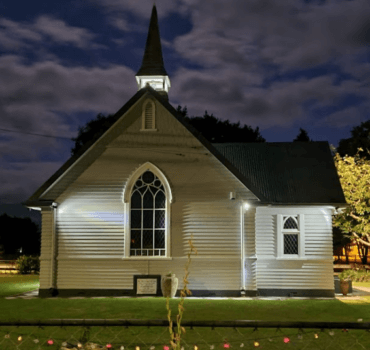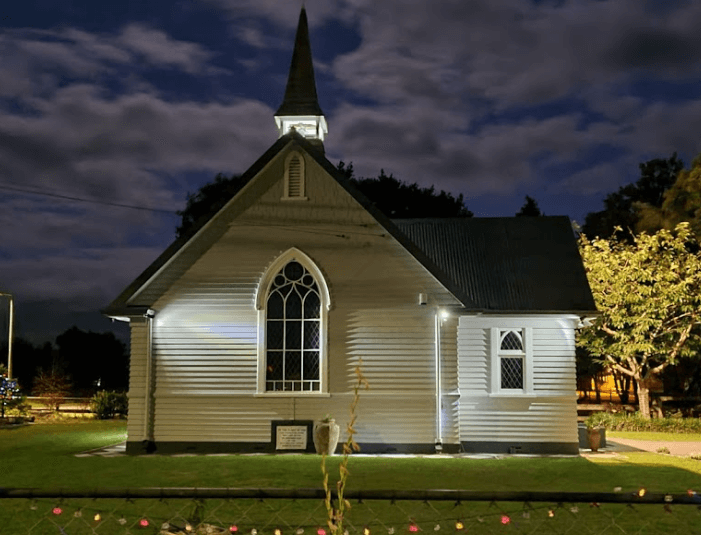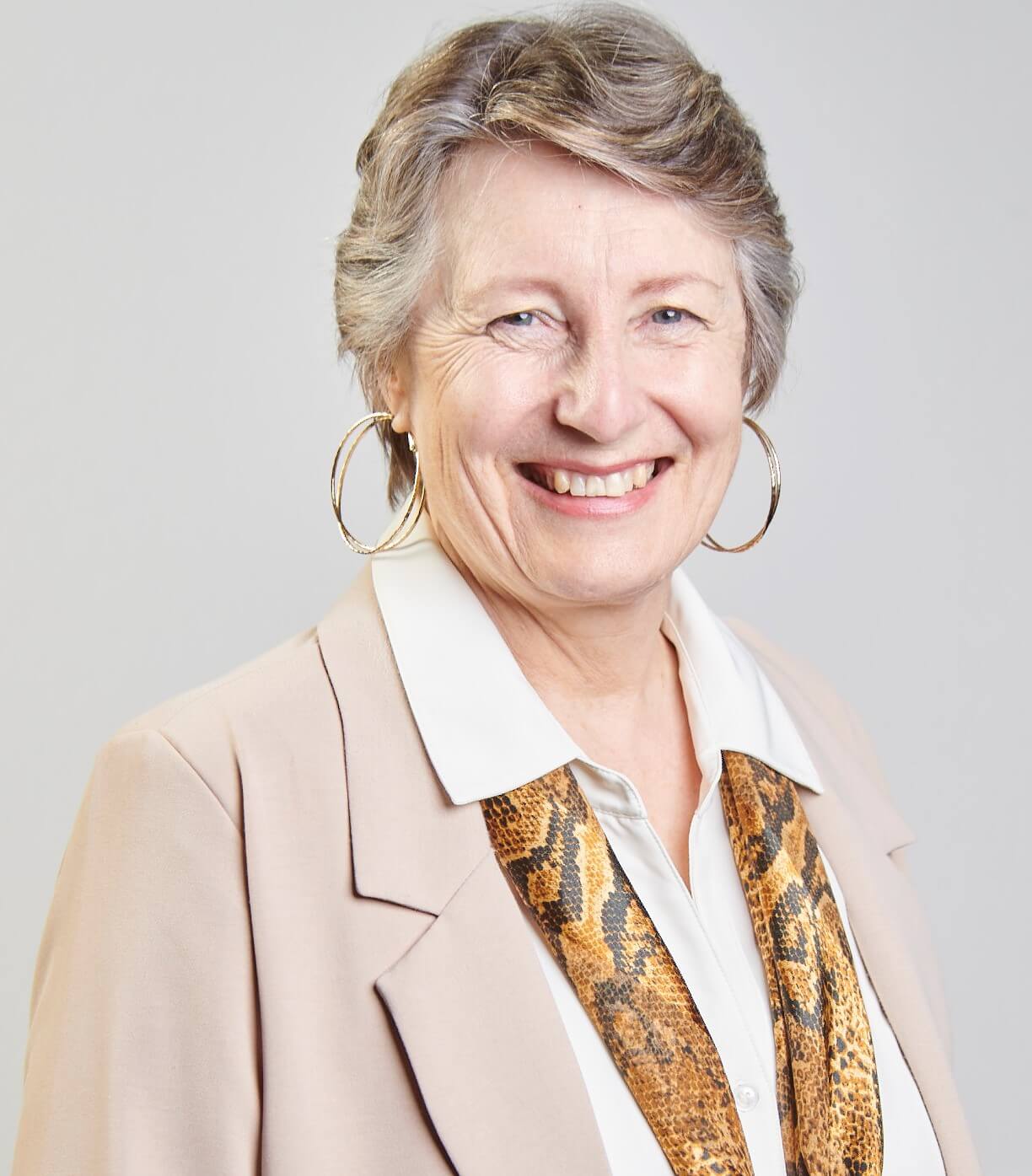
St David’s Church Matangi of St George Orthodox Parish, Hamilton.

St David’s Church Matangi of St George Orthodox Parish, Hamilton.
The village of Matangi is now home to the fourth Romanian Orthodox church to be consecrated in New Zealand.
St David’s Matangi, built in 1933 and formerly part of the St Francis Cooperating Parish of Anglicans, Methodists and Presbyterians, was consecrated last Sunday as St David’s Church Matangi of St George Orthodox Parish, Hamilton.
The service, based on ancient traditions, provided a chance to reflect on the richness of our diverse population. Led by Bishop Mihail Filimon of the Romanian Orthodox Episcopate of Australia and New Zealand, who came from Melbourne for the occasion, it attracted Orthodox Christians from all over New Zealand as well as representatives of local mainstream churches and the local community.

Crystal Beavis
It has fulfilled a dream for a small and largely immigrant community led by Rev Ovidiu Motofelea, and it’s been valued by others too. Speaking after the service, Archbishop Emeritus Sir David Moxon welcomed the continued use of St David’s as a place for Christian worship, while local heritage enthusiasts seem pleased that this designated historic site, protected in the Waikato District Plan, has been restored with a secure future.
More than a quarter of our population was born overseas (27.4 per cent according to the 2018 census), and as a country we continue to welcome immigrants. They come with skills and hope for a new future, infuse us with fresh energy, and widen our perspectives on the world.
We welcomed 60 people from 19 different countries at a citizenship ceremony held at Waikato District Council last month – the seventh one this year so far. As a district at the centre of the golden triangle between Auckland, Hamilton and Tauranga, we continue to attract new enterprise and a growing population. Waikato district is now home to about 89,000 people, up from about 58,500 just 10 years ago.
Our district is also home to the Kiingitanga with its own rich traditions that we must recognise and honour as we learn to give effect to Te Tiriti o Waitangi.
The council’s vision is to continue to draw our growing population together into liveable, thriving and connected communities.
Part of that effort lies in supporting an understanding of our local heritage, for example, through a Heritage Forum of dedicated volunteers supported by a newly appointed Strategic Heritage advisor, and a small amount of funding to support local museums and heritage projects.
Part of that effort also lies in giving voice to our diverse communities through our community committees, through our new Māori wards and through the new forums we are establishing, including a Rural Economic Advisory Panel and mana whenua forums.
Much of that effort also lies in providing well-designed infrastructure that supports and connects our communities.
As we work to put the building blocks together for our next Long Term Plan 2024-34, the trick will be to find the right balance for all these efforts and for allocating our limited rates revenue to achieve the best possible outcomes for the community. We will need your help to find that balance through the consultations to come.








